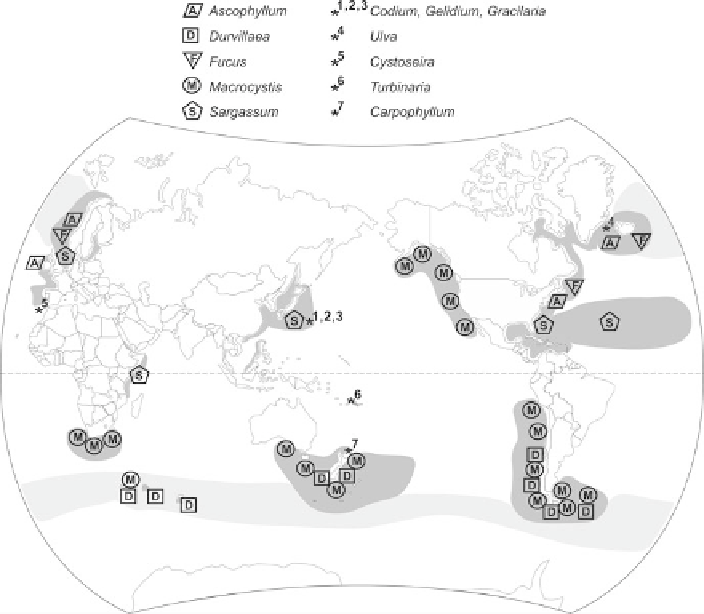Biology Reference
In-Depth Information
Fig. 17.2
Distribution of the most common genera of benthic algae (
indicated with symbols and
letters
) that are positively buoyant, as well as examples of a few benthic genera (
indicated with
asterisks and numbers
) that are less commonly found floating in the world's oceans.
Shadings
indicate areas where floating algae have been reported abundantly
M. pyrifera
and
Durvillaea antarctica
are the most common floating seaweeds in
the southern hemisphere. They occur in the SE Pacific along the Chilean coast
(Macaya et al.
2005
; Hinojosa et al.
2007
,
2011
), around Tasmania and New
Zealand (Edgar
1987
; Kingsford
1992
) and throughout the entire West Wind
Drift where floating sporophytes connect the algal populations of the sub-Antarctic
islands (Smith
2002
; Fraser et al.
2009
). Also the Agulhas Bank region off South
Africa “literally swarms with
Macrocystis
” (Hooker
1847
). Whereas
Macrocystis
and
Durvillaea
are widespread throughout cold temperate waters of the southern
hemisphere, other floating seaweeds have a more restricted distribution but may
become locally very abundant. For example, high densities of floating
Carpophyllum
spp. and
Cystophora
spp. can be found in waters around New
Zealand (Kingsford
1993
) and buoyant
Turbinaria ornata
are common among the
Polynesian islands (Stewart
2008
). Although floating seaweeds can bridge large
oceanic distances in subpolar regions, the warm waters of the tropics and
the subtropics appear to be an impenetrable dispersal barrier mostly preventing
the exchange of floating algae between the two hemispheres.

